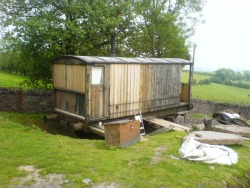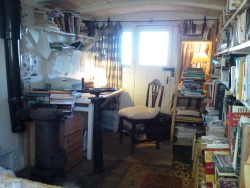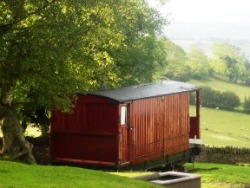The carriage
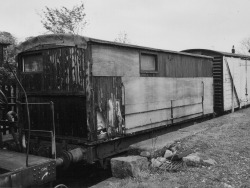 |
‘She looks a bit sad, but there’s a lot sound about her’ said Bruce, as we rounded the corner to see the object for which I’d searched so hard. I certainly couldn’t argue with the first statement. About twenty feet long, the 'brake van' was little more than a rotted wooden box resting on a rusty iron chassis. What paint remained was faded to a murky pink-brown. Chipboard was nailed over the worst timbers, which meant most of them. The roof sagged, and patches of roofing felt were clumsily tacked over the ends. ‘Brake still works. She’s perfectly restorable.’ Mighty foot-long chain links hung from her couplings and she had the oily smell of heavy |
industry. ‘Doors are on oother side,’ said Bruce, dropping down onto the track and ducking under the couplings. I followed. The carriage’s underside was, if anything, in worse condition: a mass of rusty levers and flaking ironwork. It seemed best not to look too closely. ‘Been messed about a good bit, of course. She had open verandas either end originally, but at soom point British Rail boarded them up. Fer more room, presumably. Be easy enough to put them back, though.’ Verandas, I thought. Vez would like those. Chapter 7, The Perfect Country Room |
THE RAILWAY CARRIAGE
After that, it was just a matter of getting it up the hill. Which took two years, a fifty tonne crane, 3 tractors, a JCB …
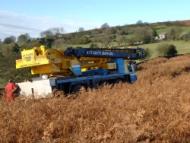
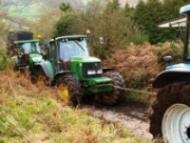
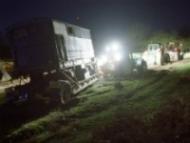
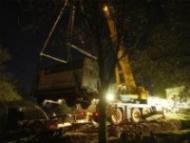
|
The odd reviewer and commentator has voiced thoughts—and looking at these pictures, maybe it’s not hard to see why—to the effect: ‘Woodward and his family are plainly loaded; it’s all very well for them to fling their money around on egomaniac vanity projects.’ Nothing could be further from the truth. Everything we’ve done at Tair-Ffynnon has been meticulously researched to find inventive ways to afford things we otherwise couldn’t. The railway brake van was due to be scrapped by the Keighley and Worth Valley Railway. |
They generously gave it to us for nothing, on condition we took it away. No-one knew, at that stage, that it weighed 20 tonnes. Having discovered it did, however, it naturally rather increased the scale of the adventure ahead. We took the attitude, as the cranes and tractors multiplied, that the brake van was giving us an extra room on the house, so even if it ended up costing £5,000 it would still be miles cheaper than building on. Thankfully, as it turned out, it cost nowhere near this much. |
COMING SHORTLY: film of the carriage coming up the mountain, please check site again in the next two weeks
|
Tair-Ffynnon sat in a blasted landscape. Our grassy, stony yard no longer existed; all traces of vegetation were gone. From the churned earth of this no-man’s land, where wheel |
ruts were three feet deep, a brown trail of devastation led away down the hill. The general effect, once we’d emerged from a hasty initial survey, was of a Paul Nash war painting of the Western Front, as if a small railway station on a hill had been used for target practice by an inexpert artillery battery, leaving just a solitary item of rolling stock, an old brake van, intact but badly damaged. Chapter 7, The Perfect Country Room |
|
|
|
 If my intention had been to bring the carriage up the hill incognito, then the view from our bedroom window the following morning was a sort of grim practical joke.
If my intention had been to bring the carriage up the hill incognito, then the view from our bedroom window the following morning was a sort of grim practical joke.